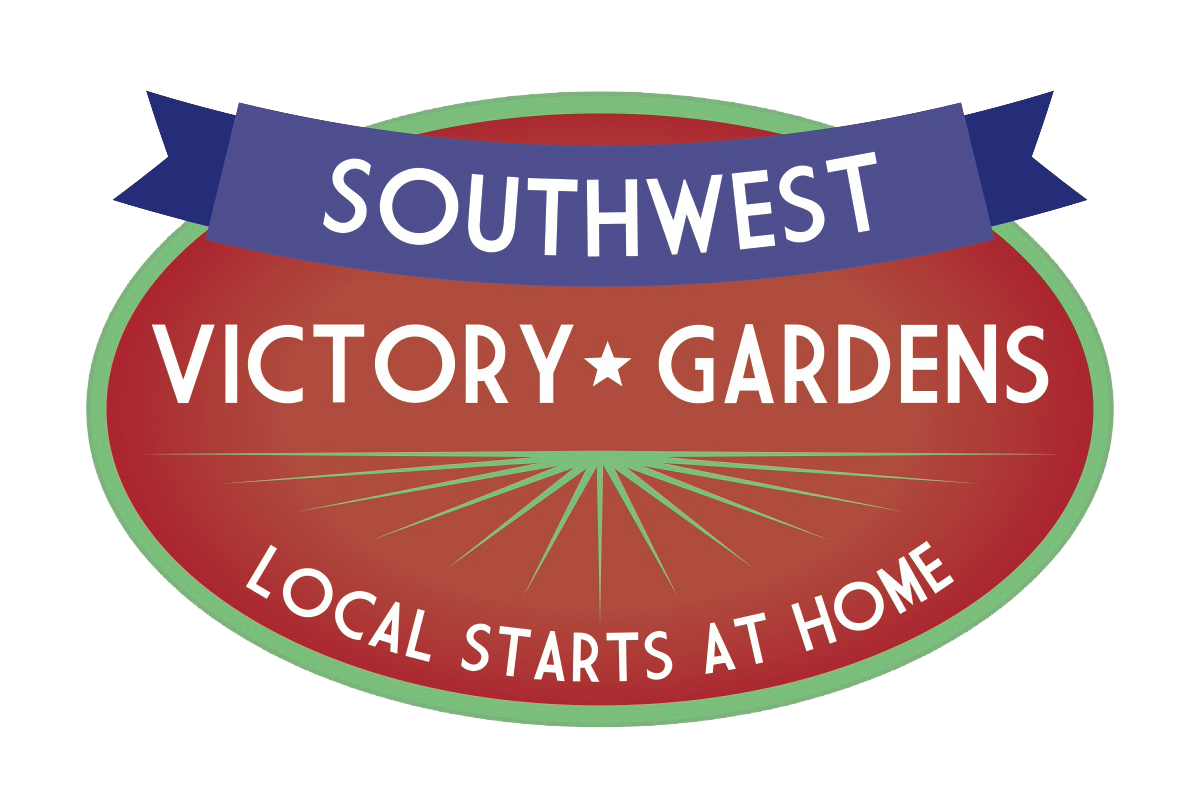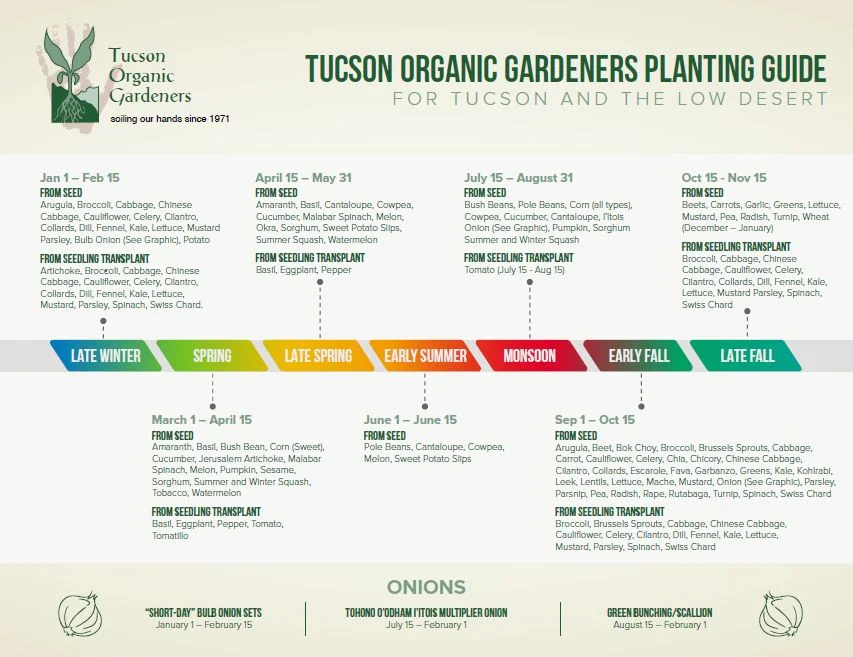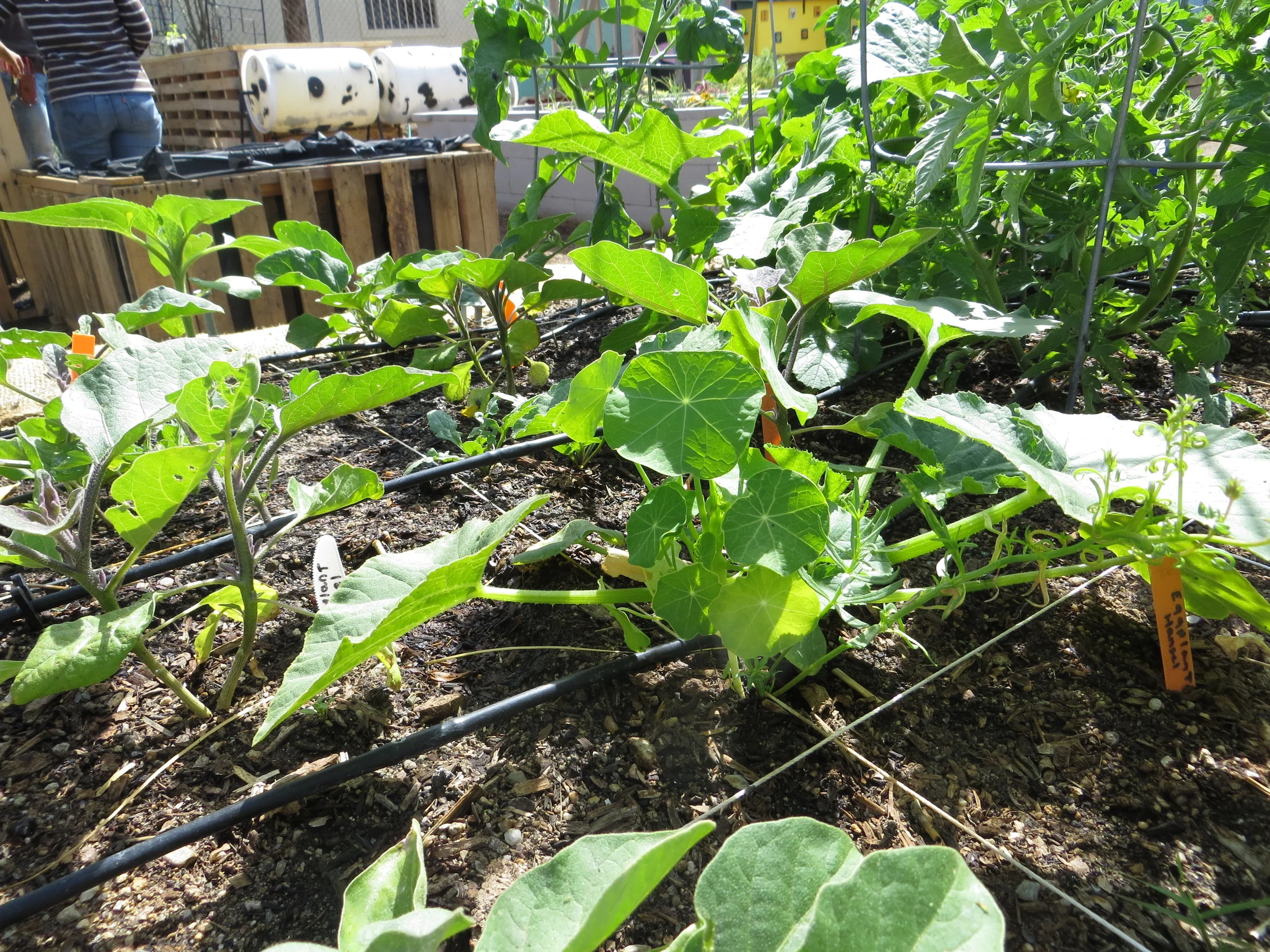Planting season will be here soon, so we thought we'd take some time this month to go over some of our most successful gardening strategies for gardening in Tucson and other arid climates. We'll be discussing these strategies in more detail during our various Gardening Workshops we will be hosting this season. Check out all of our upcoming classes!
1. Select the Right Location
All plants have specific growing conditions that they thrive in; Our fruits, vegetables, and herbs are no exception. Garden crops are some of the most nutrient demanding crops in the landscape so it's important we provide them with one of their most essential growing requirements, sunlight, while also not exposing them to our intense desert heat. The best garden location will get 6-8 hours of direct sunlight, ideally as early in the day as possible, while also getting some afternoon shade. A good location is next to a wall or structure that faces east. If you're only option is a location that gets afternoon sun, then plant tall shade providing plants on the south and west ends of the garden to create afternoon shade.
2. Start a Compost Pile
Desert soils are depleted of nutrients and are heavily compacted making them difficult to grow vegetable gardens in. One of the easiest and best ways to alleviate these issues is to add generous helpings of compost to the soil before planting your garden. Compost will add life to your soil while also making it better at absorbing and holding water. You can make your own compost at home by mixing food scraps and yard waste. Check out our blog post from last month for other great tips on how to improve your soils.
3. Follow Local Planting Guides
There are tons of books on gardening that have great planting and growing recommendations, however many of them are not applicable to our unique growing environment. For the most accurate planting and growing recommendations local books planting guides like the Tucson Organic Gardeners Planting Guide. Timing your plantings to coincide with these optimal growing conditions will help make your gardening a lot easier and help to reduce pest infestations. The worst recommendations come from the backs of seed packages and should never be followed.
4. Grow Using Intensive Planting Methods
Intensive planting techniques, like Square Foot Gardening, make the most out of small spaces and can help boost production in even the smallest spaces. Another big advantage to these growing techniques is that plants growing in close proximity to one another will help to create a "living mulch" that will help to keep the soil moist and the garden cooler over the summer months.
5. Companion Plant for Diversity
In nature many different plants grow in close proximity to one another, often providing a mutual benefit. We can replicate nature in our gardens by practicing Companion Planting and growing many different plants in the same location. Plants can attract beneficial pollinators, repel pests insects, and even help to fertilize the plants growing around them. If you're not sure what plants to grow as companions, you can never go wrong with seasonal herbs and flowers.
6. Rotate Crops for Soil Health
Planting heavy feeding crops like fruits and vegetables can deplete the soil of nutrients over time. Other issues can arise like pest and disease infestations if crops aren't rotated from time to time. In large vegetable gardens this is easily accomplished with proper planning, but it can be difficult to achieve in smaller gardens. Don't stress about it too much, just try and move plants around the garden from season to season and don't plant the same species of plants in the same area for more than 2 consecutive seasons.
7. Install Drip Irrigation
Vegetable gardens use a lot of water which can be problematic in the desert. You can take some stress of yourself and help the environment by installing a simple irrigation system to help keep your plants hydrated and healthy. It doesn't require a plumber or professional installer, you can do it yourself at home with less than $100 in materials. You can download our Irrigation Parts Shopping List and head on over to Sprinkler World to get everything you need to install a simple hose timer.
8. Grow Native Plants
No vegetable garden is complete without a few native plants growing near by. Not only do native plants require no fertilizers or extra water once the are established but they also are excellent at attracting a variety of native pollinators and beneficial insects. Try and include a mix of plants that flower at different periods of the year so that you'll have a constant supply of pollinators all year long.
9. Save your own Seed
Seed that is adapted to our climate and growing conditions will help to ensure a reliable food source for our region for millennia. You can help to build a more secure and diverse food system by growing and saving your own seed. Next season leave a few fruits on the vine to mature so you can share and have seed for next season and beyond.
10. Educate Yourself
The best way to become a great gardener is to get outside and garden as much as possible. You can also learn tons of information from other gardeners or from a variety of local gardening resources like the Community Food Bank. We offer a variety of workshops that are free and open to the public, be sure to check out our events page for a list of all of our upcoming workshops.










